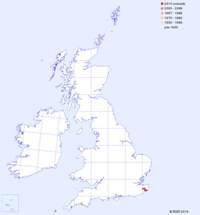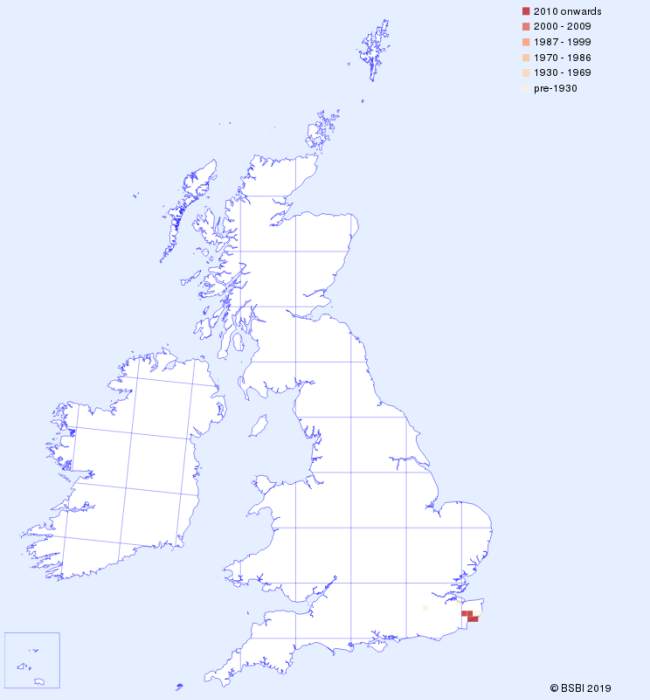Classed as Vulnerable in the Red List of threatened orchids, the Late Spider-orchid is one of Britain's rarest orchids. It is now restricted to a few sites in Kent, where many of the plants are protected by cages to prevent damage by grazing animals and other predators. Like its close relative the Bee Orchid Ophrys apifera, Ophrys fuciflora has evolved to mimic the form of a pollinating insect, and this facilitates pollination. Interestingly, the particular species of bees that pollinate Late Spider-orchids on mainland Europe do not occur in the UK, and so what little pollination takes place here must be facilitated by other insects, possibly small beetles. Seed-set is very low, and the likely factor which saves the small populations of Late Spider-orchids in Kent is that fully developed plants live for a long time and therefore only a small number of new plants are required annually in order to keep the population stable. The Late Spider-orchid flowers from late May to late July. Ophrys fuciflora is widespread in other parts of Europe from France eastwards to Romania and south to Italy.
| Distribution Map | Key Features | |
 |
Records for the Late Spider-orchid from BSBI are shown on the map with most recent in front. (Hover the mouse over the small map to expand it.) |
Plant: 5-30cm. |
Image Gallery for Late Spider-orchid Ophrys fuciflora
| Pollination | Taxonomy & Hybrids |
See also the introductory text above. In Europe the Late Spider-orchid is pollinated by species of bees of the Eucera genus, which are attracted by the shape and texture of the flower. After landing on the flower, the insects attempt to copulate with it - so-called pseudocopulation - and during this process the pollen-bearing pollinia attach to the insect, which then moves on to other flowers. |
The Late Spider-orchid belongs to the Ophrys genus. Its Latin name derives from the words 'focus' and 'flos' meaning 'bee-flowered'. |
Articles about Late Spider-orchid in JHOS
-
